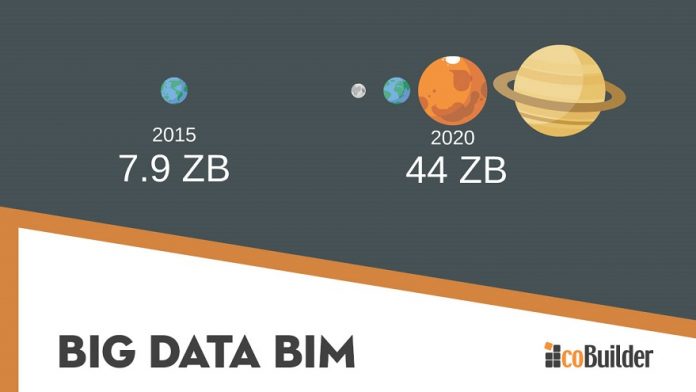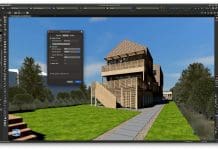coBuilder outline the role of big data in BIM and explain why it is not simply about using 3D modelling but about changing the mindset of companies
‘The Digital Universe is growing exponentially, and by 2020 the total volume of the data created in the world will reach 44 zettabytes (that is 44 trillion gigabytes!)’. This is old news for all forward-thinking industries that are constantly on the path of Data-Driven Innovation (DDI) though it came to the focus of construction industry niche media only recently. Why are we lagging behind?
We will be looking at two major reasons why the data hype seems to have flown over the heads of construction experts.
BIM is also data science?
BIM is not 3D… BIM is a system of processes… BIM is an ideological change… BIM is merely a best practice.
Following such statements, one may come to think that maybe the actual BIM projects outnumber the definitions of BIM by just a fraction. Frankly, the truth can be found in all these definitions, and there is a reason why it is so hard to define BIM. However, let us stir some more information into the mix by stating that BIM can easily be seen as the implementation of data science in the construction industry.
Data science is about scientific processes and systems (we mostly agree that BIM is a system of processes) to extract knowledge (and knowledge means optimisation of processes and eventually savings) or insights from data in various forms, either structured or unstructured (PDTs, 3D models, documents). Data science studies among other things: data sharability, data interoperability, data structure and data lifecycle. Sounds familiar?
Isn’t data the information in the dead centre of BIM that has the biggest value? Isn’t the use of data (and that can be 3D models as well) going to actually show us the benefits of BIM?
So why have we for a long time been imposing an unnatural split between ‘design-driven BIM’ that we can see and ‘data-driven BIM’ that we currently cannot when we are all actually talking about different forms of DIGITAL DATA?
Getting ahead of structured data
Now that we have realised that our sector is among the many faced with the problem of BIG data, we have to admit another setback. Most of the data currently available to us is unstructured. Unstructured data includes emails, word processing documents, multimedia, video, PDF files, spreadsheets, messaging content, digital pictures and graphics, mobile phone GPS records, etc. which certainly is BIG DATA all the same. But how do we use it? The answer is: inefficiently. The whole industry is talking about how we are going to let machines and algorithms make sense of the large amounts of data the construction industry produces, but we seem to forget that the majority of the data IS NOT machine readable, not interoperable, and yes – not structured at all.
Ever wondered why it is so hard to produce true figures about the efficiencies that BIM has brought on projects worldwide? Well, for one thing, we have not even started scratching the surface with making construction data usable, accessible and measurable. Also, data is expensive. Getting it right takes time. Getting it wrong is even more expensive. Doing BIM needs data.
Doing BIM is doing data and the reason we are failing at proving it is that we are racing too fast and we are not focusing on getting the basics about data right.
Data-Driven Innovation
The OECD identifies data-driven entrepreneurs as one of the key groups fuelling data-driven innovation. They provide the infrastructure needed to store, curate and validate large-scale datasets. Essentially, they provide the products that are making sense of and creating the value of BIG data.
At coBuilder, we are determined to be those entrepreneurs – vitally important for the construction industry. Today, we hold the knowledge of how to digitise construction product data, make it structured, interoperable, standards-based and let it flow through the stages of a project’s lifecycle. And having that knowledge and experience, who knows what we are going to know tomorrow.
We have created our own innovative data solutions, and now when the means of utilising BIG DATA about construction products are available, it is up to you to start creating value for your business. BIM is about collaboration after all.
Resources:
OECD, Data-Driven Innovation, Big Data for Growth and Well-Being, DOI:10.1787/9789264229358-en
Charles Roe, 2012, http://www.dataversity.net/the-growth-of-unstructured-data-what-are-we-going-to-do-with-all-those-zettabytes/
Predictive Analytics Degree: Northwestern SPS”. northwestern.edu. Northwestern University. Retrieved 28 May 2016. The Master of Science in Predictive Analytics (MSPA) program, established in 2011, is a fully online part-time graduate program, one of the first to offer dedicated training in data science
coBuilder














